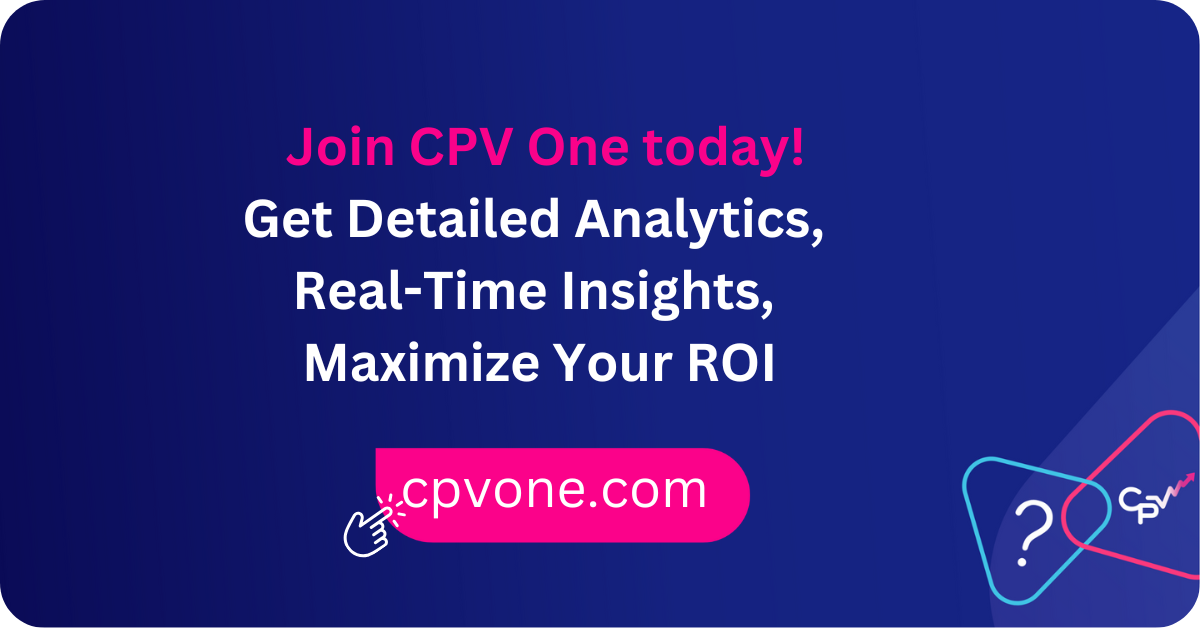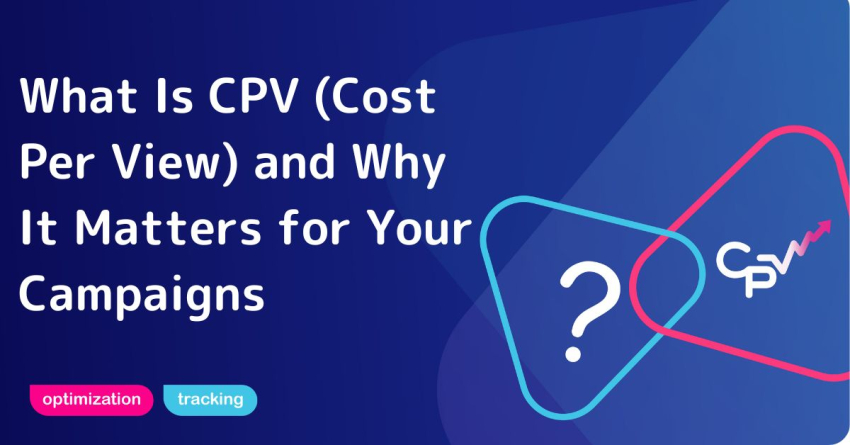CPV stands for Cost Per View. It tells you how much you’re paying every time someone views your landing page after clicking your ad. If you’re running any kind of performance marketing campaign, this is one of the first metrics to watch.
It’s simple: lower CPV means cheaper traffic. But if it’s too low and you’re not getting conversions, that’s a red flag. So let’s break it down.
The CPV Formula
CPV = Total Ad Spend / Number of Views
Example:
You spend $150 and get 3,000 views.
CPV = $150 / 3,000 = $0.05 per view
That means you’re paying 5 cents each time someone loads your landing page. You want to know this because views are where conversion opportunities begin.
What Counts as a “View”?
In CPV One, a view is counted when someone lands on your URL after clicking the ad. Not when the ad is displayed. Not when they scroll past it. When they actually visit your page.
This makes CPV more reliable than metrics like impressions, because:
- You only pay attention to real traffic reaching your funnel.
- You avoid wasting time optimizing for people who never showed real interest.
Why CPV Is Useful
Here’s what CPV tells you and why it matters:
1. Are You Overpaying for Traffic?
If your CPV is high, it may be a sign that:
- You’re using expensive placements.
- Your targeting is too broad or off-target.
- Your creatives aren’t driving clicks.
High CPV = fewer chances to convert within budget.
2. Which Traffic Source Is More Efficient?
By comparing CPV (Cost Per View) across different networks, you can:
- See which source gives more views per dollar.
- Cut out underperforming placements.
- Shift budget to traffic that brings real visits at a lower cost.
CPV helps you allocate spend smarter.
3. How Healthy Is Your Funnel?
If CPV is low but your conversions aren’t coming through, it tells you:
- You might have bot traffic.
- Your offer or landing page needs work.
Pair CPV with CR (Conversion Rate) for deeper insights.
How CPV Works Inside CPV One
CPV One gives you real-time CPV tracking across all your campaigns. Here’s how you can use it:
– Compare CPV Across Campaigns
You can see CPV data for every campaign, ad group, or source. This makes it easy to identify what’s working and what’s not.
– Drill Down by Device, Geo, or Ad Creative
Want to know if mobile traffic from the UK is costing more than desktop traffic from the US? With CPV One, you can filter and segment your CPV data to find out exactly where your spend is going.
– Use in Split Tests
When running A/B tests on landing pages or creatives, CPV helps you see which version gets cheaper views. Cheaper views with higher conversion = the winning combo.
CPV vs. CPC: What’s the Difference?
Many people confuse CPV and CPC. They are not the same.
| Metric | What It Tracks | Why It Matters |
|---|---|---|
| CPC (Cost Per Click) | Cost / Clicks on ad | Shows how much you’re paying just for a click, not the landing page visit. |
| CPV (Cost Per View) | Cost / Landing page views | More accurate if you want to measure actual traffic hitting your page. |
If your ad gets a click (CPC), but the page fails to load, or the user bounces fast, you still pay. CPV tracks real visits, so it’s better for tracking user engagement.
✅ When You Should Focus on CPV
You don’t always need to track every metric. But if you’re doing any of the following, CPV should be front and center:
✅ 1. Launching a New Campaign
New creatives or offers? Watch CPV first. If you’re paying too much to get people to your site, fix that before worrying about conversions.
✅ 2. Testing Traffic Sources
Not all networks are equal. CPV tells you if one traffic source is giving you junk traffic at a premium price.
✅ 3. Optimizing Video or Pop Campaigns
These formats often run on CPV pricing models. Understanding your CPV helps you scale without wasting budget.
✅ 4. Trying to Scale Spend
Scaling works only if your CPV stays low. Otherwise, you’re throwing more money at traffic that won’t convert.
Pro Tip: Don’t Look at CPV Alone
You can’t judge campaign success based on CPV in isolation.
Low CPV with 0 conversions? That’s not a win.
High CPV with great CR and ROI? Could be worth every cent.
Pair CPV with CR and CPA to make smarter decisions.
Summary
| Metric | What It Means | What It Tells You |
|---|---|---|
| CPV | Cost Per View | Cost to get each visitor to your page |
| CR | Conversion Rate | How well the page converts |
| CPA | Cost Per Acquisition | How much it costs to get a sale or lead |
Final Thoughts
CPV is one of the fastest ways to see if your campaign is on track. It helps you stay in control of your spend, test smarter, and act quickly.
With CPV One, you don’t need to calculate anything manually. The platform tracks it for every campaign, source, and device—so you know where your money is going and how to get better results for less.


